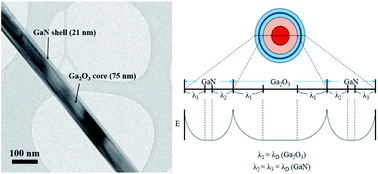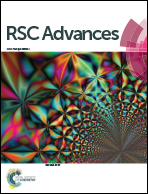Synthesis and CO gas sensing properties of surface-nitridated Ga2O3 nanowires
Abstract
Ga2O3 based gas sensors have limited use at a temperature lower than 400 °C because of their poor performances at low temperatures. Efforts to further improve their performances at room temperature are necessary. This study examines the sensing properties of surface-nitridated Ga2O3 nanowires toward CO gas. Surface-nitridated Ga2O3 nanowires were fabricated by thermal evaporation of GaN powders followed by thermal nitridation in an NH3 atmosphere. Scanning electron microscopy and transmission electron microscopy showed that the GaN shell layer in a typical surface-nitridated nanowire had a thickness of ∼21 nm and excellent shell layer thickness uniformity. Multiple networked surface-nitridated Ga2O3 nanowire sensors showed responses of 160–363% to CO concentrations of 10–200 ppm at 150 °C. These responses were 1.6–3.1 fold stronger than those of pristine Ga2O3 nanowire sensors at the same CO concentrations and stronger than those of many pristine metal oxide nanostructures and Ga2O3/metal oxide core–shell nanowires at similar temperatures. The results showed that the sensitivity of Ga2O3 nanowires could be enhanced by simple ammoniation treatment. The enhanced response of the surface-nitridated Ga2O3 nanowires to CO gas can be explained based on a potential barrier carrier transport mechanism combined with a surface depletion mechanism and excellent shell layer uniformity.


 Please wait while we load your content...
Please wait while we load your content...